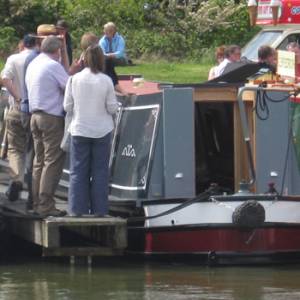
Tips and Advice: Buying a second hand boat?
Follow our Engine Check List - and avoid the pit falls
Is there oil in the bilge? It may be a sign of an oil leak and warrants closer inspection.
Are there signs of lubricant leakage around gaskets, freeze plugs and hoses?
Are the hoses, belts and fittings cracked or brittle?
Pull a spark plug and see if it appears relatively new or burnt and poorly gapped (an indication of how well serviced the engine is).
Is there a white chalky residue on the engine or drive? (This may indicate that it has been running hot.)
Check the engine's oil condition and level. (If the oil looks milky, water may have entered, indicating the possibility of serious mechanical problems.)
Check gearcase oil.
Are the sacrificial anodes on the drive in good shape, or should they have been replaced long ago?
Are there signs that the drive, rudder or propeller have hit submerged items.
Look for signs of cavitation damage on the propeller(s), which is indicative of poor performance.
Check for broken engine mounts.
Compression check the engine.
Boat Check List
Aside from the engine, your inspection should also include the following:
Check steering and throttle controls and cables.
Switch on and operate all systems; bilge pump, blower, lights, stereo, winches, freshwater sink and shower, galley stove, head, heater, air conditioner, generator and so forth.
Make sure all hardware is still firmly attached and check the condition of backing plates where possible.
Open and close hatches.
Check out the fuel tanks, fittings and lines. Be sure to smell for leaks.
Are the batteries securely fastened in acid-proof containers?
Is the propeller shaft and rudder stock straight?
Is the upholstery in good condition and the stitching still holding?
Does the cabin smell like mildew?
Check through-hull fittings to ensure they are not loose and leaking.
Check electrical items and connections for rust.
When buying a second hand boat we'd always recommend that you have a survey.

